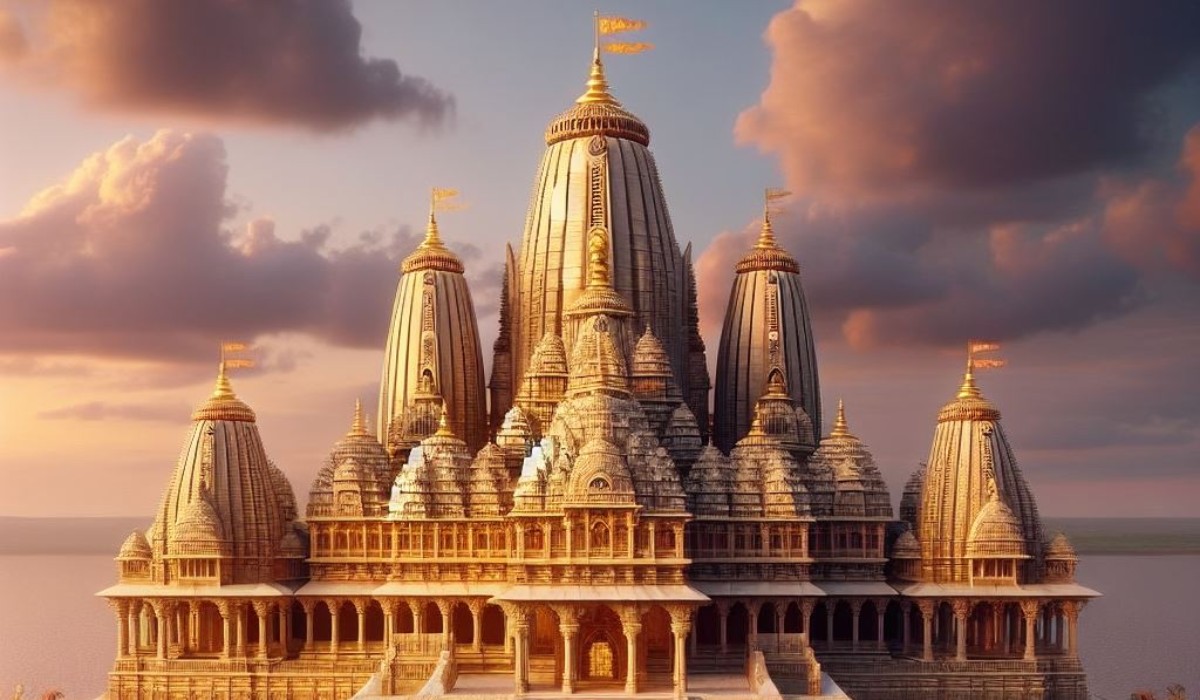The history of the Ayodhya Ram Temple is deeply rooted in the religious and cultural tapestry of India. The site holds significance for Hindus as it is believed to be the birthplace of Lord Rama, a revered deity in Hinduism. The temple has been a focal point of historical and socio-political debates for several centuries. Here is an overview of the historical context leading to the construction of the Ram Temple in Ayodhya:
Also Read: सोशल मीडिया पर हर ट्रेंड राम के नाम
Ancient Roots:
Ayodhya, located in the northern state of Uttar Pradesh, has a rich history dating back to ancient times. It is mentioned in the Hindu epic Ramayana as the birthplace of Lord Rama. The epic narrates the life and adventures of Lord Rama, his wife Sita, and his loyal companion Hanuman.
Also Read: Indian Railways to run 200 Aastha Special trains after Ayodhya Ram Mandir pran pratishtha
Babri Masjid Construction:
In the 16th century, during the reign of the Mughal Emperor Babur, a mosque was constructed at the site where Hindus believe Lord Rama was born. This mosque came to be known as the Babri Masjid.
Controversies and Disputes:
The Babri Masjid-Ram Janmabhoomi dispute became a contentious issue over the years. Hindus claimed that the mosque was built after demolishing a pre-existing temple marking the birthplace of Lord Rama. Legal battles ensued, leading to tensions between the two communities.
Also Read: अमेरिका में भी रामलला की धूम, फेमस टाइम्स स्क्वायर पर गूंज रहे ढोल
Demolition of the Babri Masjid:
In 1992, the Babri Masjid was demolished by a large crowd of Hindu activists, leading to widespread communal tensions and riots. The event had significant repercussions on the socio-political landscape of India.
Legal Proceedings:
Following the demolition, various legal battles ensued to decide the ownership of the disputed site. The case went through several courts, including the Allahabad High Court, before reaching the Supreme Court of India.
Also Read: Unconventional Business Ideas: Innovations That Broke the Mold
Supreme Court Verdict:
In November 2019, the Supreme Court of India delivered a historic verdict, granting the disputed land to the Hindus for the construction of the Ram Temple. The court also directed the government to allocate an alternative plot of land to the Muslim community for the construction of a mosque.
Also Read: Ram Temple inauguration: Half-day in all central government offices on Jan 22
Construction of the Ram Temple:
With the legal hurdles cleared, the construction of the Ram Temple began in Ayodhya. The temple is envisioned to be a grand and iconic structure, symbolizing the cultural and religious heritage of India.
The Ayodhya Ram Temple holds immense significance for millions of Hindus, marking the realization of a long-cherished dream. While the construction process unfolds, the temple stands as a testament to the complex interplay of history, religion, and legal processes in the diverse and pluralistic fabric of India.
Also Read: Navigating the Depths: Understanding the State of Unconsciousness











